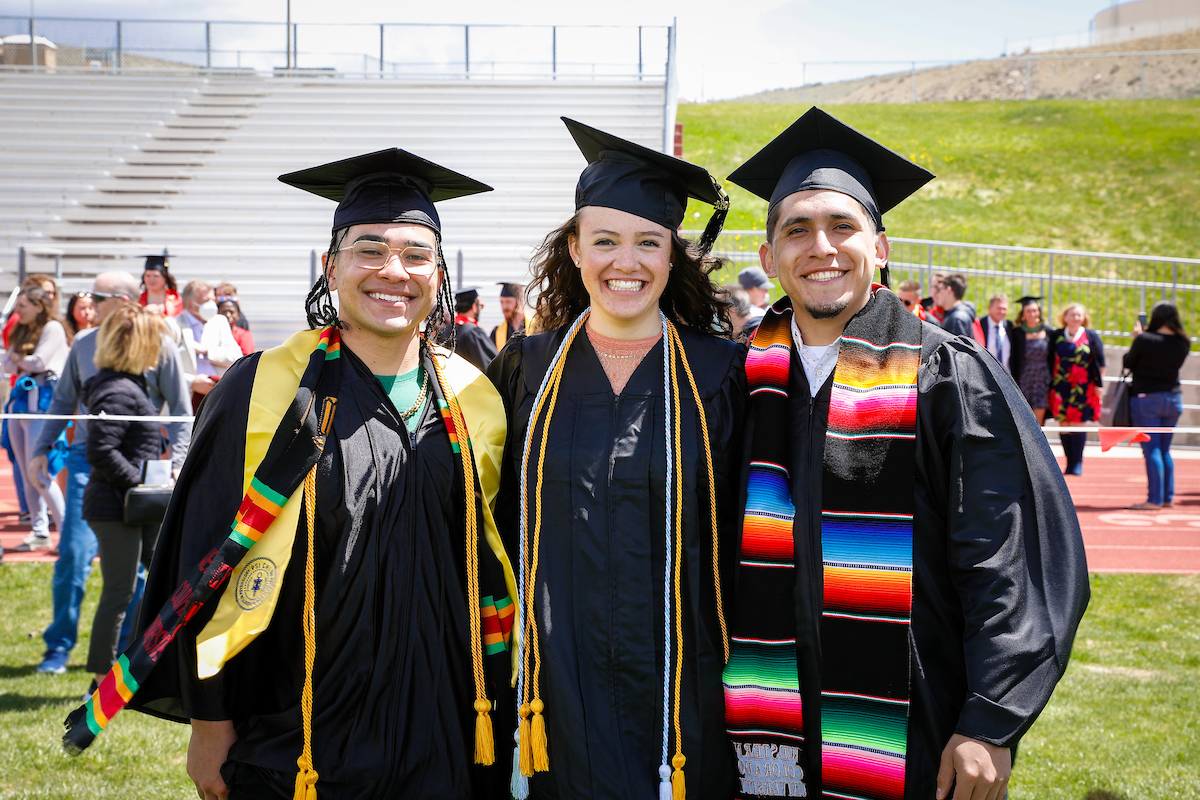Why is This Important?
Western strives to provide a learning and working environment where students, faculty, and staff feel valued and all have the opportunity to thrive and succeed. Western will be a desirable place for diverse people to authentically work, learn, express, collaborate, and grow.
Metrics
Key Metric
Secondary Metrics
- Student Success (retention, persistence, and completion)
- Workforce Retention
How do we get there?
Community, Wellness, & Sense of Belonging
This initiative is designed to promote an institution where faculty, staff, and students identify Western as a welcoming place to work and learn with a strong community and quality of life. This initiative includes, but is not limited to, security, access to mental health resources, and personal connection in order for all to thrive. Western’s classrooms, offices, common spaces, and events should reflect a robust culture of student engagement and wellness centered on learning.
Rather than individual Student Affairs department programming, the curricular approach to student engagement is a national best practice that offers a more cohesive means of efficiently using campus resources. This approach requires staff to evaluate programming based on student learning and development. Shifting to this curricular approach provides intentionality, structure, and sequenced learning applied to college student experiences beyond the classroom.
Diversity, equity, inclusion, and justice are the primary values of the Western community and are fundamental principles of this strategic plan. All Western community members have a responsibility to incorporate an ongoing, informed dialogue on wellness, diversity, equity, inclusion, and justice into daily work. Training is essential for faculty, staff, and students to examine their roles and interactions with personal, social, cultural, and environmental awareness. Using “place as teacher,” we see a model of a diverse and thriving ecosystem. Staff and faculty offering a broader perspective will enrich community members’ educational and professional experiences in unique ways, elevating the inclusive standard of the institution. Including and empowering community voices will promote buy-in throughout the learning process and, as a result, community members will understand the importance of these efforts to their personal success and to the success of the organization.
We will accomplish this through:
- Developing strategic opportunities for student engagement and community building.
- Advancing a culture that promotes mental health, wellness, and safety for faculty, staff, and students.
- Promoting inclusive policies, programs, and learning environments that strengthen an institutional culture in which diverse faculty, staff, and students trust they are welcome, valued, and safe.
Creation of a Culture of Value and Support
This initiative is designed to develop students’ and employees’ potential to find stability in change, connect to a common vision, and employ their voices in a fruitful and powerful way. Faculty, staff, and students should have confidence in the structures and forums available for communication and advocacy and a strong belief that their concerns will be heard and addressed.
This initiative is also designed to ensure that faculty and staff feel supported and fulfilled as individuals and as professionals. We will succeed as a learning community that values high-quality faculty and staff and empowers them to engage students and colleagues for long-term growth. This initiative is designed to retain strong professionals by demonstrating that they have a permanent place at Western and that they have respect, autonomy, and opportunities to grow and advance in their careers.
We will accomplish this, though:
- Cultivation of strategies and forums that encourage proactive and meaningful communication and empower the voices of faculty, staff, and students.
- Creating a comprehensive compensation plan for all Western employees. This will include systemizing a culture of value for non-tenure track faculty and staff by innovating titles, salary structures, contracts, benefits, and opportunities for professional activity.
- Development of supervision, evaluation, and knowledge management best practices.
Meeting Western’s Housing Needs
Western continues to develop short-term and long-term solutions to the housing challenges facing our faculty and staff. This initiative has been developed through an in-depth assessment of these challenges and includes recommendations regarding student housing as a significant factor in student recruitment and retention.
We will accomplish this through:
- A short-term strategy of developing rental property access for employees through Multi-Unit Lease Agreement(s) to secure roughly 15 units (mix of 1, 2, and 3 bedrooms).
- A long-term strategy to develop the construction of new faculty and staff housing units, and the development of relationships with local entities to expand current opportunities.
- Development of a Housing Assistance Fund to assist with initial rental costs and down payment assistance by offering low- or no-interest loans to faculty and staff.
- Development of a planning process regarding student on-campus residence halls, including plans for renovation, potential expansion, funding opportunities to complete deferred maintenance, and constituency housing.





